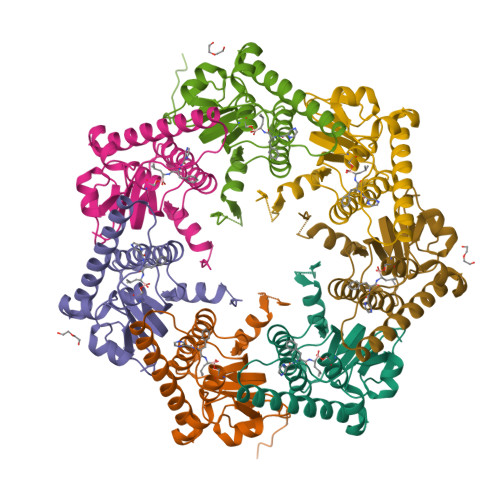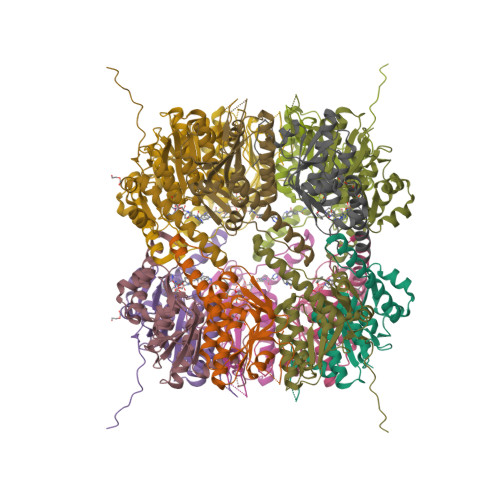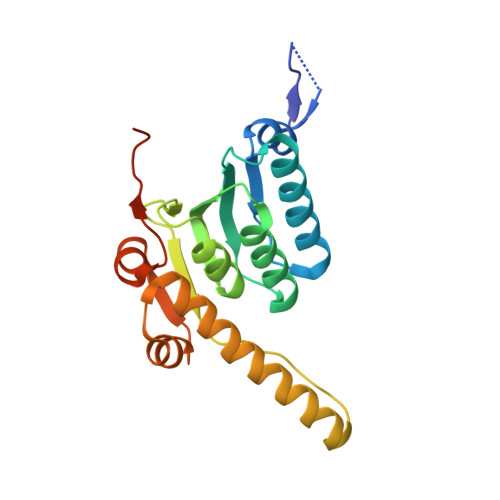Mechanism of the allosteric activation of the ClpP protease machinery by substrates and active-site inhibitors.
Felix, J., Weinhaupl, K., Chipot, C., Dehez, F., Hessel, A., Gauto, D.F., Morlot, C., Abian, O., Gutsche, I., Velazquez-Campoy, A., Schanda, P., Fraga, H.(2019) Sci Adv 5: eaaw3818-eaaw3818
- PubMed: 31517045
- DOI: https://doi.org/10.1126/sciadv.aaw3818
- Primary Citation of Related Structures:
6HWM, 6HWN - PubMed Abstract:
Coordinated conformational transitions in oligomeric enzymatic complexes modulate function in response to substrates and play a crucial role in enzyme inhibition and activation. Caseinolytic protease (ClpP) is a tetradecameric complex, which has emerged as a drug target against multiple pathogenic bacteria. Activation of different ClpPs by inhibitors has been independently reported from drug development efforts, but no rationale for inhibitor-induced activation has been hitherto proposed. Using an integrated approach that includes x-ray crystallography, solid- and solution-state nuclear magnetic resonance, molecular dynamics simulations, and isothermal titration calorimetry, we show that the proteasome inhibitor bortezomib binds to the ClpP active-site serine, mimicking a peptide substrate, and induces a concerted allosteric activation of the complex. The bortezomib-activated conformation also exhibits a higher affinity for its cognate unfoldase ClpX. We propose a universal allosteric mechanism, where substrate binding to a single subunit locks ClpP into an active conformation optimized for chaperone association and protein processive degradation.
Organizational Affiliation:
Institut de Biologie Structurale, Université Grenoble Alpes, CEA, CNRS, IBS, 71 Avenue des Martyrs, F-38044 Grenoble, France.




















